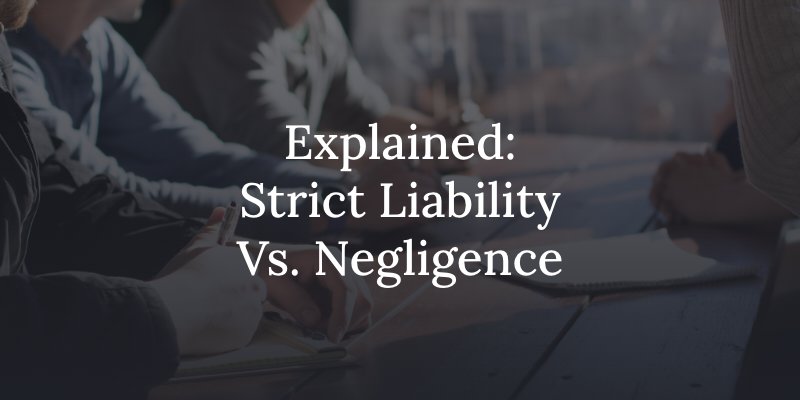
If you have suffered a preventable injury through no fault of your own, you may be wondering about the options available to you to recover common injury-related damages like medical expenses, lost wages, and compensation for your pain and suffering. A St. Louis personal injury lawsuit against the at-fault party recovers an injury victim’s financial losses and provides a sense of justice and accountability. Understanding the difference between strict liability vs. negligence is an important aspect of any claim.
What Are the Elements of Negligence In a Personal Injury Claim?
A sudden injury causes a person’s life to abruptly spin off-course with large hospital bills coming in at the same time they may be unable to return to work due to temporary or permanent physical limitations or disability. Many personal injuries result from an individual’s negligence. For instance, a driver who makes an error at an intersection or causes an accident by distracted driving is held accountable for a victim’s damages through a car accident claim against their insurance policy. Similarly, a store owner’s negligence in allowing a leaky pipe to create a slip-and-fall hazard for customers is liable for a fall victim’s damages. Compensation in this type of claim comes from the negligent property owner’s commercial liability insurance. Proving the elements of negligence for a successful liability claim requires documenting evidence of the following:
- The at-fault party owed a duty of care to take reasonable measures to avoid causing injuries to others
- They breached this duty through negligence, recklessness, or wrongdoing
- Their breach of duty directly caused injuries
- The injury victim suffered economic and non-economic damages from their injury
Once an injury victim’s personal injury attorney has documented ample evidence of negligence they can prove liability and make a compelling claim for an injury victim’s compensation against the at-fault party’s insurance.
What Is Strict Liability In a Personal Injury Claim?
Some injury claims are not based on negligence because different standards are in place for specific circumstances holding a party strictly liable. Common examples include a manufacturer’s strict liability for designing, producing, and marketing safe products. In a defective product claim, an injury victim doesn’t need to prove the manufacturer’s negligence. Instead, they must prove that the product has a defect inherent to its design, a mistake that occurred during its manufacturing, or a flaw in its marketing that caused an injury with damages to the victim. For example, if a food processor’s sharp blades spin out of the processor and injure the user, the injury victim must provide evidence of a flawed design, a manufacturer mistake during the food processor’s production, or inadequate instructions or insufficient safety warnings were included in the product’s packaging.
Strict Liability for Pet Owners and Inherently Dangerous Actions
Pet owners in most states also have strict liability for their pet’s actions beginning from the moment they take ownership of the pet. For example, if a homeowner’s dog bites a delivery person and causes a serious injury, the bite victim doesn’t have to prove the owner’s negligence because the owner is under strict liability for the dog’s actions. Strict liability leaves the dog’s owner liable for the victim’s damages regardless of the dog’s history or whether or not the owner was negligent resulting in a dog bite. An individual or business may also be held strictly liable for injury to others if the injury occurred while the at-fault party was using something inherently dangerous, such as explosives at a road construction site. The construction company is under strict liability for their use of explosives and is liable for damages if they misuse the explosives and cause injuries.
Can an Injury Victim Recover The Same Compensation In a Strict Liability Case as a Negligence Claim?
In both types of personal injury claims, the injury victim is entitled to recover their economic and non-economic damages such as medical expenses, lost wages, and compensation for pain and suffering.

